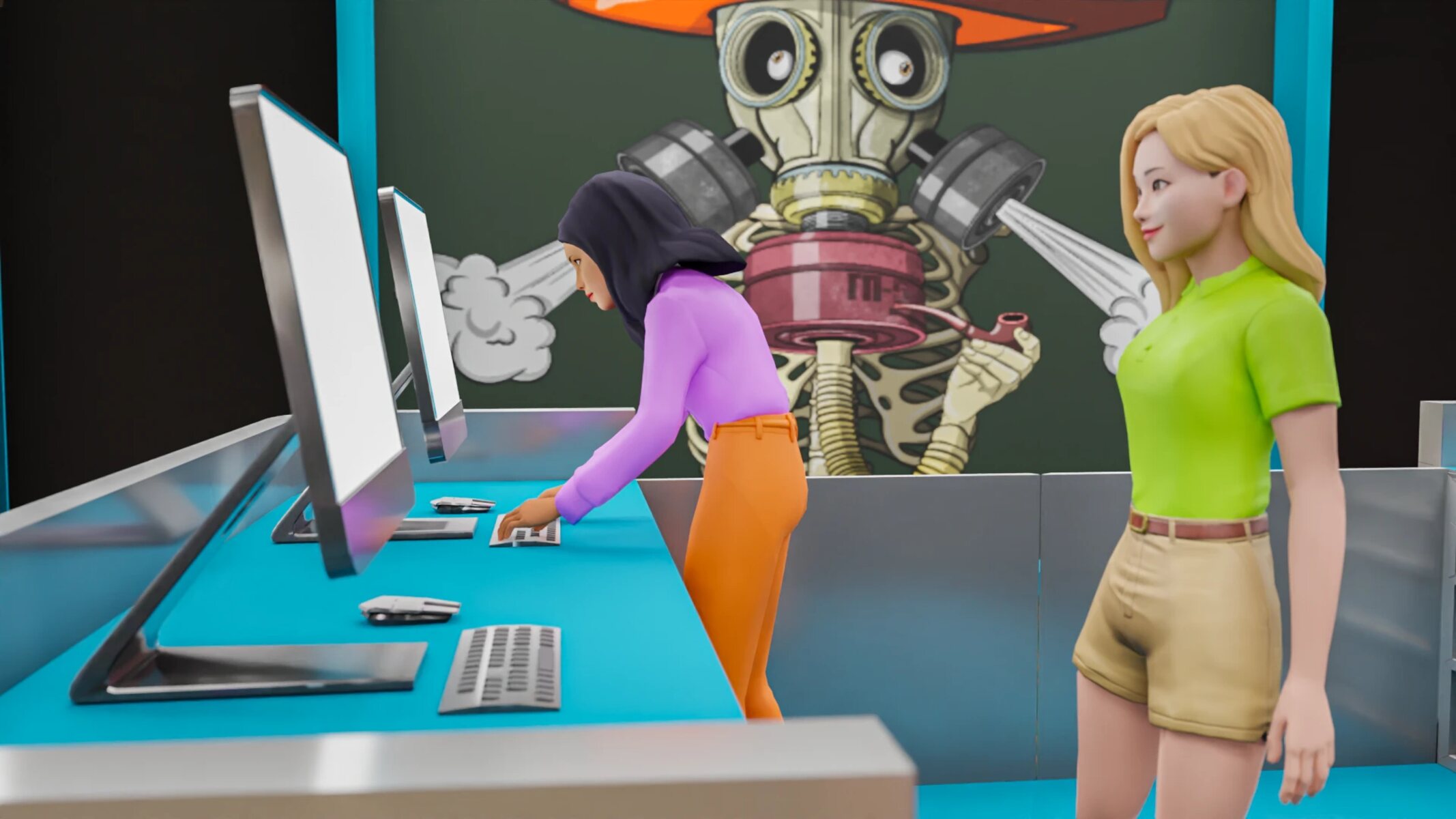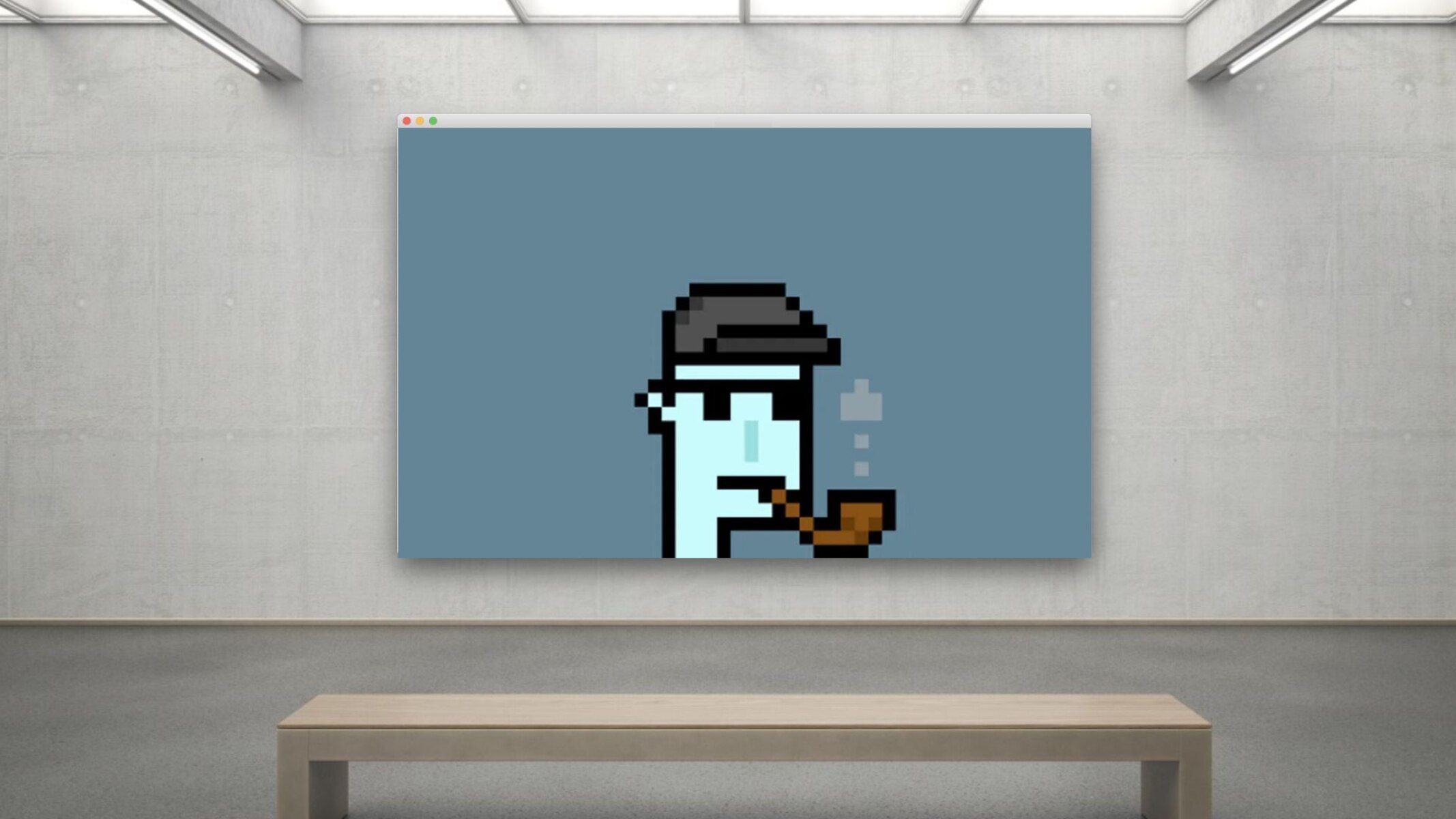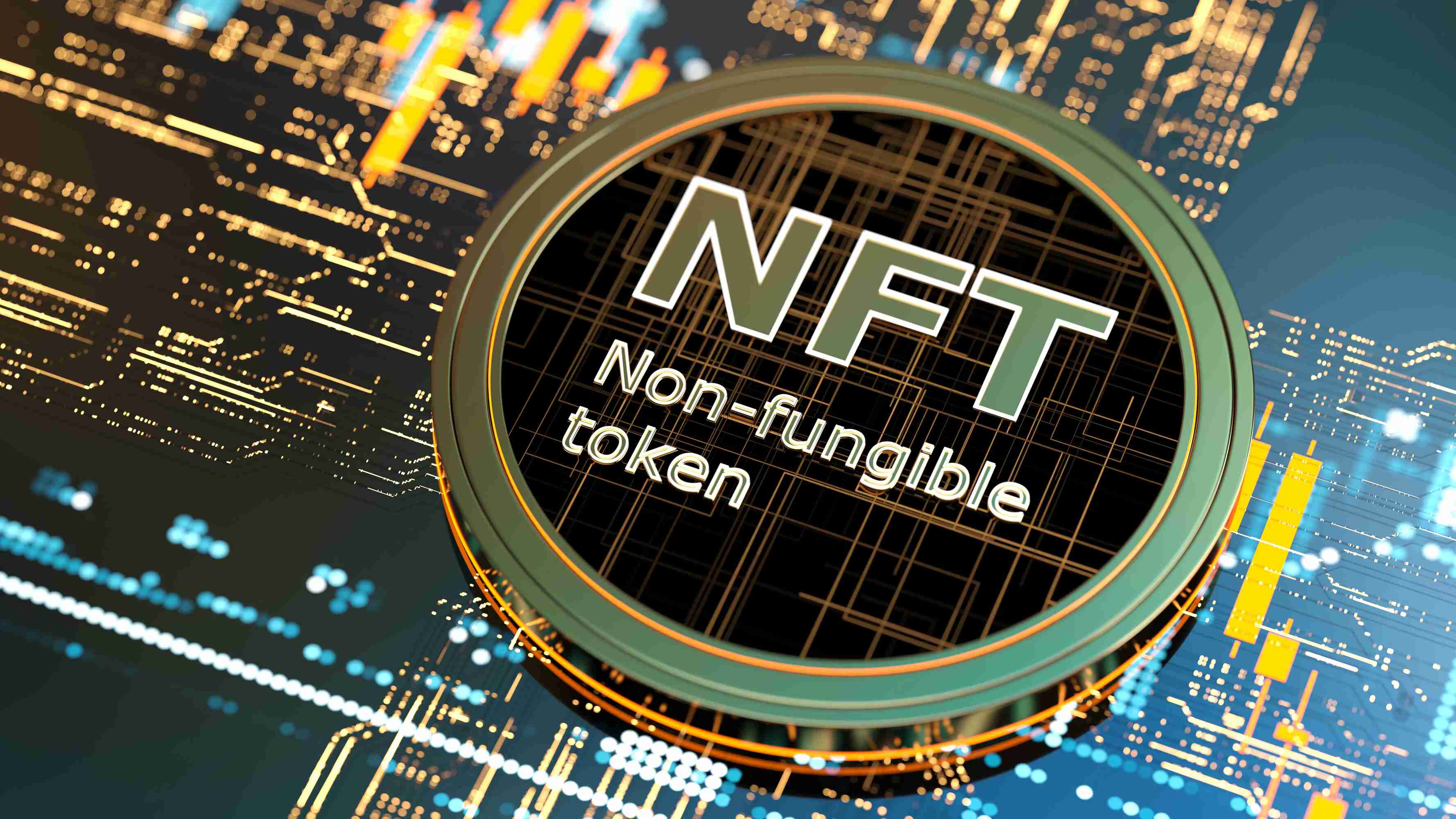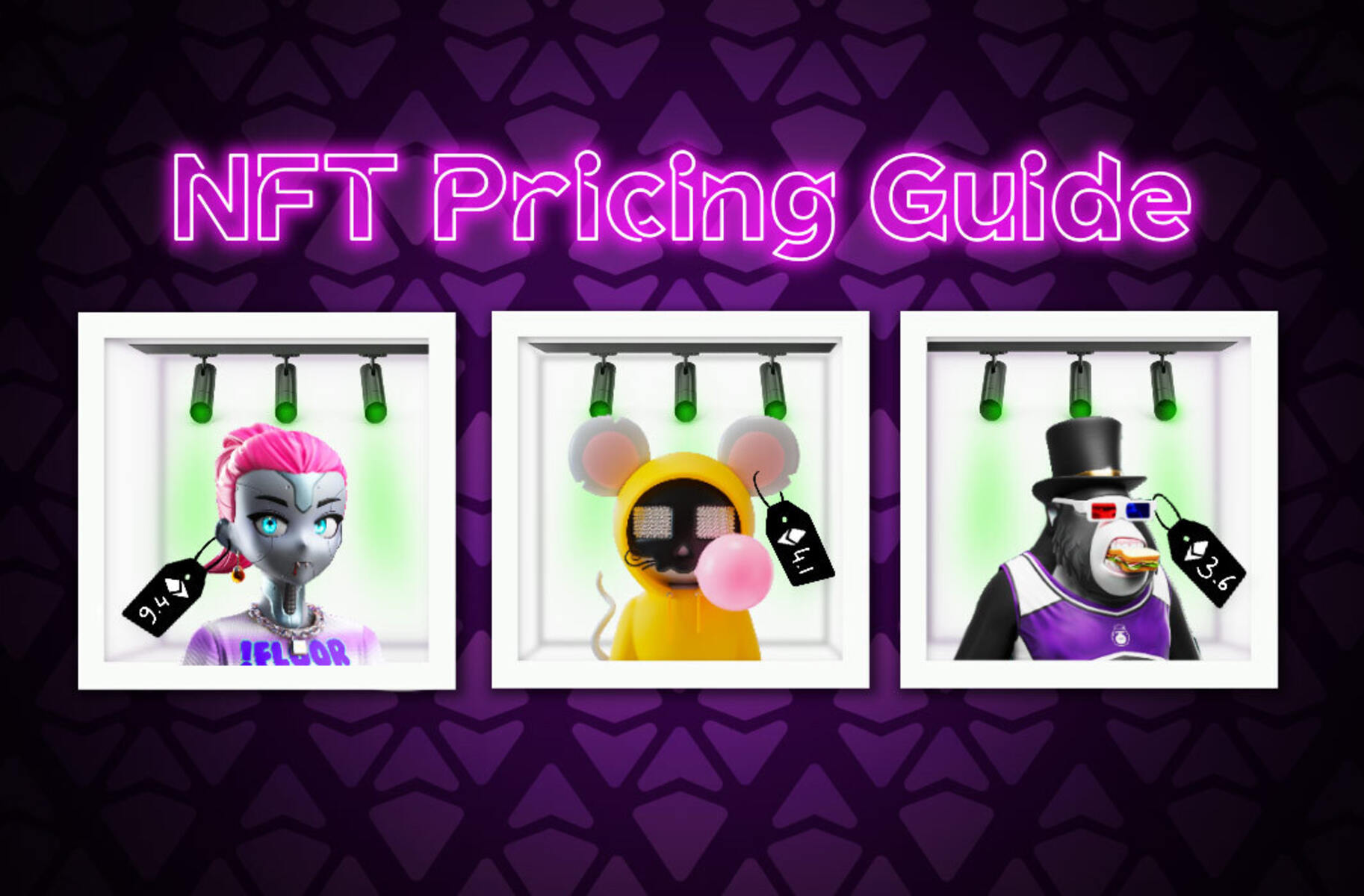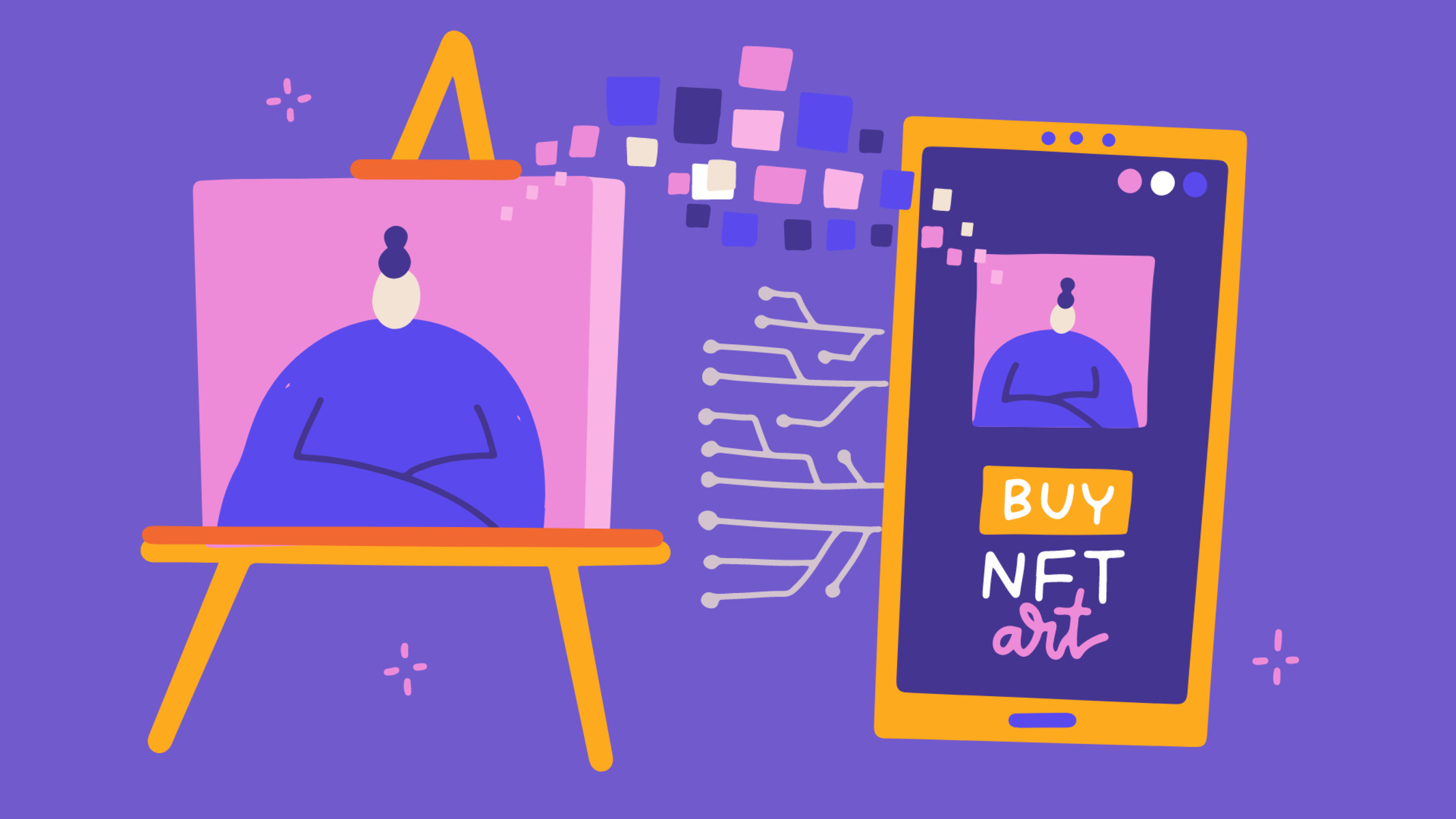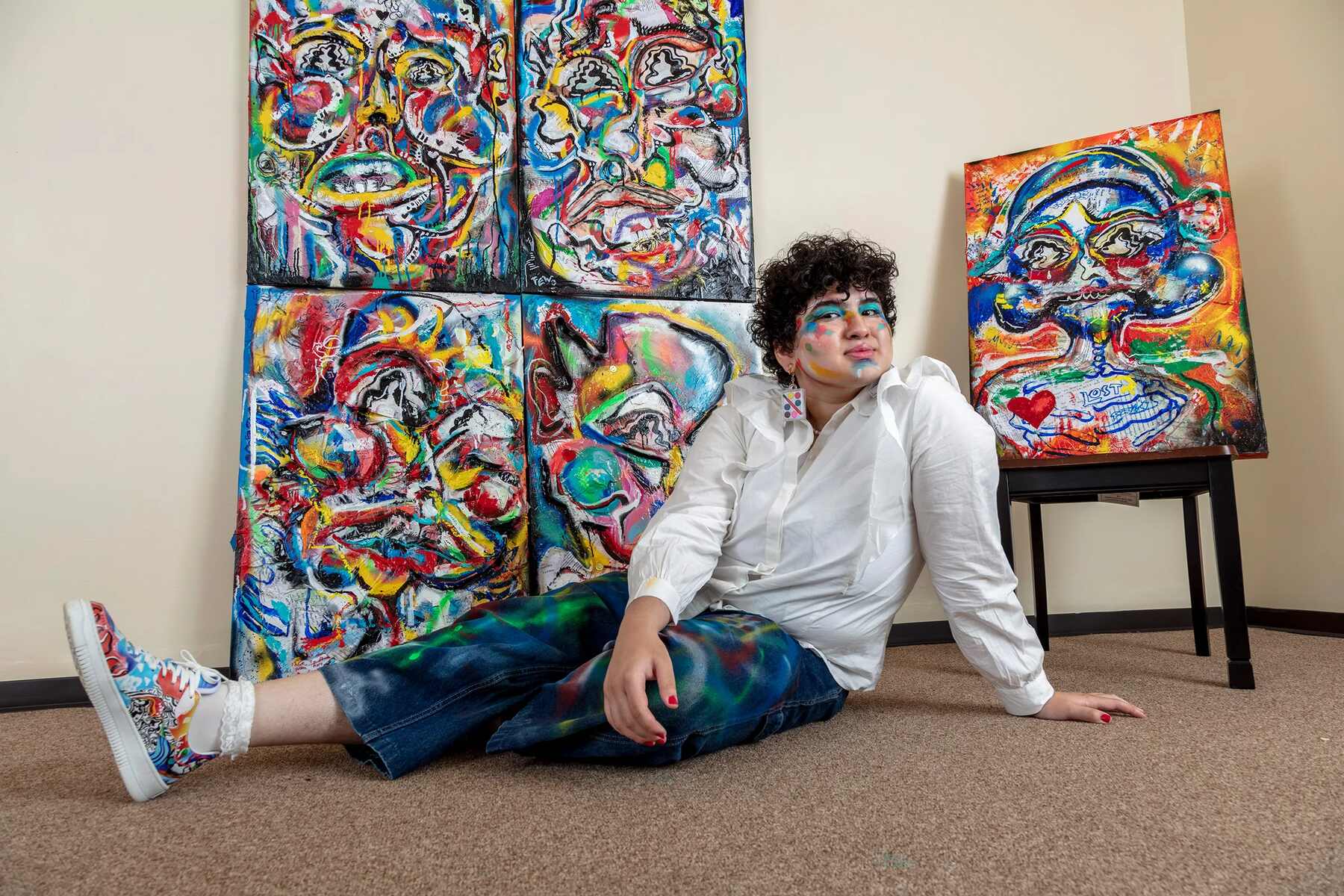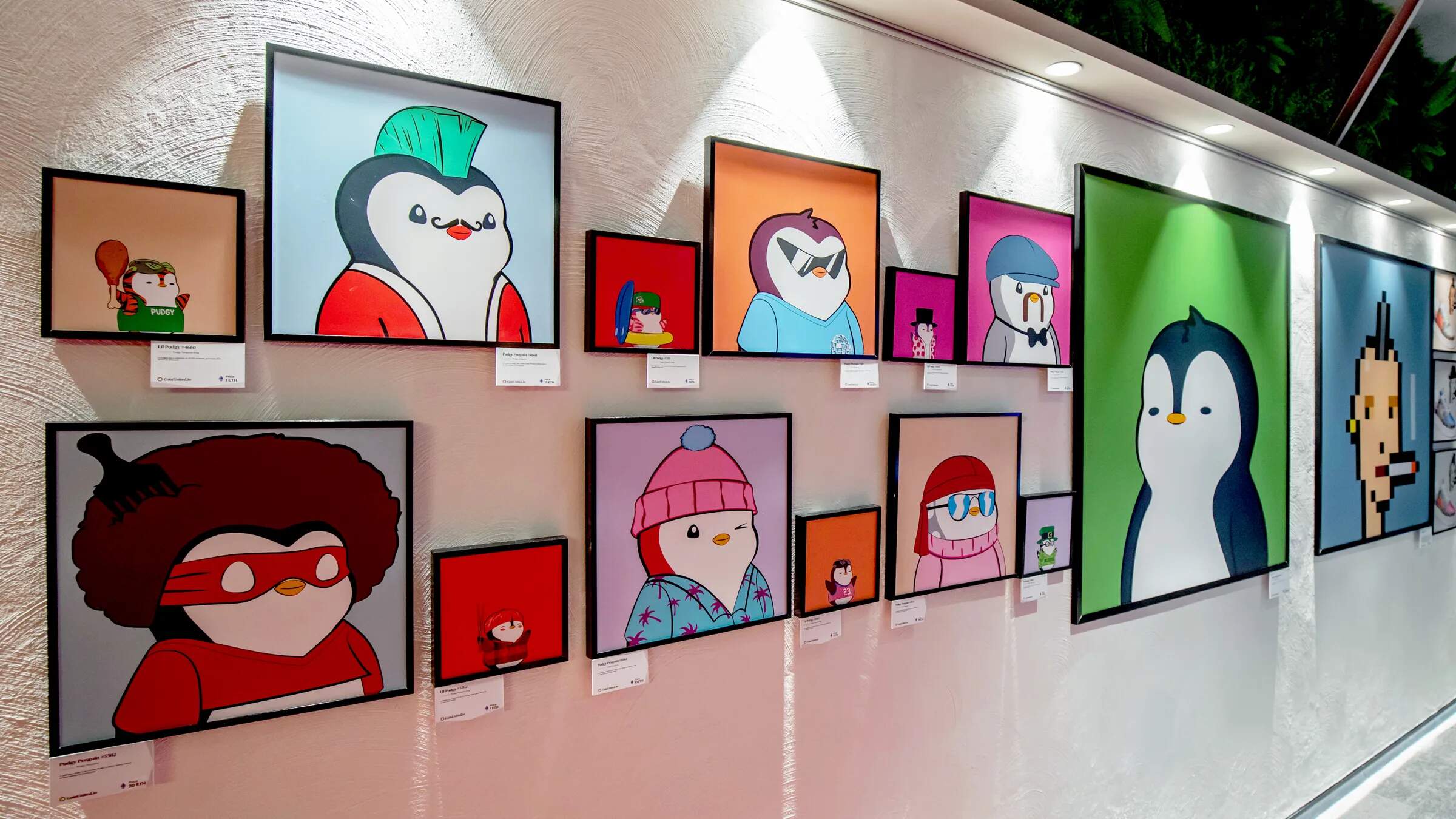Introduction
Welcome to the world of digital art and Non-Fungible Tokens (NFTs). With the rise of blockchain technology, artists now have the opportunity to showcase their creations in a whole new way. NFTs have revolutionized the art market, providing a unique platform for artists to sell and authenticate their work digitally.
But what exactly is an NFT? NFT stands for Non-Fungible Token, which means that it is a one-of-a-kind digital asset that cannot be replicated or replaced. Unlike cryptocurrencies such as Bitcoin or Ethereum, which are interchangeable, each NFT holds a distinct value and identity.
Creating digital art as an NFT opens up a world of possibilities for artists. It allows for greater exposure, access to a global audience, and the potential for increased earnings. This article will guide you through the process of creating digital art as an NFT, including the steps to set up your creative space, choose your preferred medium, prepare your artwork for the NFT marketplace, mint your art as an NFT, and promote your masterpiece.
Whether you’re a seasoned digital artist or new to the medium, creating art as an NFT can be a thrilling and rewarding experience. It offers a chance to embrace technology, connect with a wider community, and establish yourself in the ever-evolving world of digital art. So, let’s dive in and explore the incredible journey of creating digital art as an NFT.
What is NFT?
In recent years, Non-Fungible Tokens (NFTs) have gained immense popularity in the digital art world. But what exactly is an NFT?
An NFT, or Non-Fungible Token, is a type of digital asset that represents ownership or proof of authenticity of a unique item or piece of content. It is based on blockchain technology, which ensures the security and immutability of the ownership record.
One of the key features of NFTs is their non-fungibility. Unlike cryptocurrencies such as Bitcoin or Ethereum, which are fungible and can be exchanged on a one-to-one basis, each NFT possesses a distinct value and cannot be replaced or interchanged with another token.
NFTs have opened up a whole new world for artists, musicians, and creators of all kinds. They provide an opportunity to sell and monetize digital content in a way that was previously difficult or impossible. With NFTs, artists can authenticate their work, gain recognition, and directly connect with their audience without the need for intermediaries.
One of the most intriguing aspects of NFTs is their ability to track and verify ownership. The blockchain technology underlying NFTs ensures that every transaction and transfer of an NFT is recorded and cannot be tampered with. This transparency and traceability make NFTs a reliable way to prove the authenticity and provenance of digital assets.
Another significant aspect of NFTs is their potential for creating scarcity in the digital realm. By assigning unique properties to each NFT, such as limited editions or special attributes, creators can enhance the value and desirability of their digital art. This concept of scarcity in the digital domain is a major departure from the infinite replicability of digital files.
In summary, NFTs are revolutionizing the art world by providing a secure and transparent way to authenticate and trade digital assets. They offer artists and creators a new avenue for monetization and exposure, while collectors get the opportunity to own unique and scarce digital items. The NFT market continues to evolve and expand, offering exciting possibilities for the future of digital art.
Benefits of Creating Digital Art as NFT
Creating and selling digital art as Non-Fungible Tokens (NFTs) comes with a plethora of benefits for artists. Let’s explore some of the advantages:
- Ownership and Authenticity: NFTs provide a secure and verifiable way to prove ownership and authenticity of digital art. The blockchain technology behind NFTs ensures that each piece of art is unique and cannot be replicated or tampered with.
- Global Reach: Selling your digital art as an NFT opens up your work to a global audience. Unlike traditional art galleries or exhibitions, NFT marketplaces allow you to showcase and sell your art to collectors from all around the world.
- Direct Engagement: NFTs enable artists to have direct engagement and interaction with their audience. Artists can connect with collectors, receive feedback, and build a community around their work, fostering a sense of connection and appreciation.
- Potential for Increased Earnings: With NFTs, artists have the opportunity to earn more from their creations. In addition to the initial sale, artists can earn royalties each time their artwork is resold in the secondary market, creating an ongoing revenue stream.
- Cutting Out Intermediaries: By utilizing NFTs, artists can bypass traditional intermediaries such as art galleries or agents. This allows artists to have more control over the pricing, distribution, and monetization of their work.
- Experimentation and Innovation: Digital art and NFTs offer artists the freedom to explore new mediums, techniques, and concepts. The digital realm provides endless possibilities for creativity and experimentation, pushing the boundaries of what is considered traditional art.
- Preservation of Digital Art: NFTs provide a way to preserve and protect digital art from being modified or plagiarized. The blockchain technology ensures the integrity and originality of the artwork, safeguarding it for future generations.
These are just a few of the many benefits of creating digital art as NFTs. It offers artists a unique opportunity to embrace technology, reach a global audience, and monetize their creations in a new and exciting way. With the growing popularity of NFTs, the possibilities for artists are endless.
Step 1: Set Up a Digital Art Creation Space
Before you start creating digital art as Non-Fungible Tokens (NFTs), it’s important to create a dedicated workspace that allows you to unleash your creativity. Here are some steps to help you set up your digital art creation space:
- Choose your equipment: Invest in a reliable computer or laptop with sufficient processing power and storage capacity. Additionally, consider getting a graphics tablet or pen display for more precise input when creating your art digitally.
- Software and tools: Explore different digital art software options and choose the one that suits your style and preferences. Popular choices include Adobe Photoshop, Procreate, Corel Painter, and Clip Studio Paint. Be sure to familiarize yourself with the software and its features to maximize your creative potential.
- Calibrate your monitor: To ensure accurate color representation in your artwork, calibrate your monitor using a hardware calibrator or software calibration tools. This will help you achieve consistent and reliable color accuracy throughout your creative process.
- Ergonomics: Pay attention to ergonomics to prevent discomfort or repetitive strain injuries. Invest in a comfortable chair, position your monitor at eye level, and ensure that your workspace allows for proper posture and easy access to your tools and equipment.
- Organize your files: Establish a system for organizing and storing your digital art files. Create folders and subfolders to categorize your work, making it easier to locate specific projects in the future. Additionally, consider implementing a backup system to protect your artwork from data loss.
- Inspiration and references: Surround yourself with inspiration by creating a mood board or gathering references related to your artistic style. This can be done by creating a physical collage or using digital tools to collect images, color schemes, and textures that inspire your creative process.
- Configure your workspace: Customize your digital art creation space to suit your needs and artistic process. This may involve arranging your tools and software windows for optimal workflow, setting up custom keyboard shortcuts, or creating personalized brushes and presets.
By setting up a dedicated digital art creation space, you can fully immerse yourself in the artistic process and create stunning digital artworks as NFTs. Remember to regularly update and maintain your workspace to keep it organized and conducive to your artistic growth.
Step 2: Choose Your Preferred Digital Art Medium
Choosing the right digital art medium is crucial in expressing your artistic vision and creating captivating artworks as Non-Fungible Tokens (NFTs). Here are some considerations to help you select your preferred digital art medium:
- Raster-based or Vector-based: Decide whether you want to create artwork in a raster-based or vector-based format. Raster-based art is made up of pixels and is more suitable for realistic or detailed artwork, while vector-based art consists of scalable shapes and is ideal for illustrations, logos, and designs that require high scalability.
- Painting and Illustration: If you enjoy the process of simulating traditional painting techniques digitally, explore digital painting software that provides a wide range of brushes and textures to mimic real-life painting experiences. Alternatively, if your focus is on creating illustrations, consider software that offers precise control and the ability to work with layers.
- 3D Modeling and Sculpting: For artists interested in creating 3D artworks, 3D modeling and sculpting software allows you to bring your imagination to life in the digital realm. These tools provide the ability to create and manipulate 3D objects, textures, and lighting to create stunning and immersive artwork.
- Photography and Photo Editing: If your artistic style involves working with photographs or enhancing images digitally, invest in powerful photo editing software that offers a wide range of tools for retouching, color correction, and creative effects. These tools can help you transform ordinary photographs into extraordinary digital art pieces.
- Mixed Media and Collage: Digital art also allows for the integration of various media types. Look for software that supports collage and mixed media techniques, combining elements such as images, textures, text, and graphics to create visually dynamic and layered compositions.
- Experimentation and Exploration: Digital art provides the freedom to experiment and explore different styles and techniques. Don’t be afraid to try out new software or tools to push the boundaries of your creativity and discover unique ways to express your artistic vision.
Remember that selecting a preferred digital art medium is not a one-size-fits-all approach. Explore different options, experiment with various software, and find the medium that resonates with your artistic style and creative goals. With the right digital art medium, you can unleash your imagination and create breathtaking artworks as NFTs.
Step 3: Start Creating Your Digital Art Piece
Now that you’ve set up your digital art creation space and chosen your preferred digital art medium, it’s time to unleash your creativity and start creating your masterpiece as a Non-Fungible Token (NFT). Here are some steps to guide you:
- Sketch and Plan: Begin by sketching out rough ideas and concepts for your artwork. This helps you visualize your composition and layout before committing to the final piece. Experiment with different compositions, perspectives, and color palettes to find the best approach for your art.
- Refine Your Sketch: Once you have a solid foundation, refine your initial sketch by adding more detail and refining the proportions and shapes. This is an opportunity to make any necessary adjustments and fine-tune your composition before moving forward.
- Choose Your Tools and Brushes: Familiarize yourself with the various tools and brushes available in your chosen digital art software. Experiment with different brush settings, textures, and effects to find the ones that suit your artistic style and vision.
- Work in Layers: Utilize the layering feature in your digital art software to create a non-destructive workflow. Separate different elements of your artwork onto individual layers, allowing for easier editing and adjustment as you progress.
- Add Color and Textures: Select a color palette that aligns with the mood and atmosphere you want to convey in your artwork. Experiment with different techniques to add textures, gradients, and shading to bring depth and dimension to your digital piece.
- Experiment and Iterate: Don’t be afraid to experiment and explore different techniques and styles as you work on your digital art. Allow yourself the freedom to make mistakes and iterate on your artwork until you’re satisfied with the final result.
- Pay Attention to Detail: Zoom in and refine the smaller elements of your artwork to ensure precision and attention to detail. Small adjustments and refinements can make a big difference in the overall quality and impact of your digital piece.
- Seek Inspiration and Feedback: Throughout the creative process, seek inspiration from other artists, art communities, and online resources. Engage with fellow artists and seek constructive feedback to gain fresh perspectives and improve your work.
Remember, creating digital art is a journey of exploration and self-expression. Embrace the digital medium and embrace the possibilities it offers. Take your time, enjoy the process, and let your creativity flow as you bring your digital art piece to life.
Step 4: Prepare Your Artwork for NFT
Once you have completed your digital art piece, it’s time to prepare it for the Non-Fungible Token (NFT) marketplace. Proper preparation ensures that your artwork is presented in the best possible way and increases its chances of attracting potential buyers. Follow these steps to prepare your artwork for NFT:
- Clean Up and Optimize: Review your artwork and make any necessary adjustments and refinements. Remove any stray marks or imperfections and ensure that the image is visually appealing and aligned with your artistic vision.
- Resolution and Format: Consider the optimal resolution and format for your artwork. Ensure that the resolution is high enough to showcase the details of your art while keeping the file size manageable. Save your artwork in a format that is widely supported, such as JPEG or PNG.
- Metadata: Metadata plays a crucial role in the NFT marketplace. It provides information about your artwork, including the title, description, edition number (if applicable), and any relevant details about the creation process. Craft a compelling and informative description that engages potential buyers and reflects the story behind your artwork.
- Tokenize Your Art: To create an NFT, you’ll need to choose a blockchain platform that supports NFT creation, such as Ethereum or Binance Smart Chain. Follow the specified steps on the platform to mint your artwork as an NFT. This process typically involves uploading your artwork file, adding the metadata, and paying any associated gas fees.
- Verify Authenticity: Proof of authenticity is essential in the NFT marketplace. Consider creating a digital certificate of authenticity or including a unique signature or watermark on your artwork to enhance its authenticity and credibility.
- Create Limited Editions (Optional): If you want to create limited editions of your artwork, decide on the number of editions and ensure that the metadata reflects the edition and availability. Limited editions can add exclusivity and value to your NFTs.
- Consider Royalties: Determine if you want to receive royalties for future sales of your artwork in the secondary market. Many NFT platforms provide options to set royalty percentages, allowing you to earn a percentage of the sale price each time your artwork is resold.
By thoroughly preparing your artwork for the NFT marketplace, you increase its visibility and appeal to potential collectors. Take the time to fine-tune each element, ensuring that your digital art is presented in the best possible light and accurately represents your artistic vision.
Step 5: Choose an NFT Marketplace
Choosing the right Non-Fungible Token (NFT) marketplace is essential for showcasing and selling your digital artwork. There are several NFT marketplaces available, each with its own unique features, audience, and reputation. Here are some factors to consider when selecting an NFT marketplace:
- Platform Reputation and Trust: Research the reputation and trustworthiness of the NFT marketplace. Look for established platforms that have a track record of successful sales, secure transactions, and a supportive community of artists and collectors.
- Marketplace Fees: Consider the fees associated with listing and selling your artwork on the platform. Compare the percentage or flat fees charged by different marketplaces and evaluate how they align with your pricing and profit goals.
- User Interface: The user interface of the marketplace should be user-friendly and intuitive, making it easy for both artists and collectors to navigate the platform, discover artwork, and make transactions smoothly.
- Marketplace Audience: Look into the target audience and user base of the marketplace. Consider whether it aligns with your target market and if it attracts collectors who appreciate and are willing to invest in the type of art you create.
- Secondary Market Opportunities: Find out if the marketplace has an active secondary market where buyers can sell your artwork to other collectors. A thriving secondary market can increase the potential for your artwork’s appreciation and ongoing sales.
- Additional Features: Consider any additional features offered by the marketplace, such as social networking capabilities, promotional tools, or community engagement. These features can help you interact with other artists and potential buyers, promoting your artwork and expanding your reach.
- Platform Security: Ensure that the marketplace prioritizes security and protects the ownership rights of your artwork. Look for platforms that utilize blockchain technology to maintain transparent and immutable records of ownership.
It’s important to thoroughly research and evaluate different NFT marketplaces before making a decision. Consider reaching out to other artists who have experience with specific platforms for their insights and recommendations. Ultimately, selecting the right NFT marketplace will significantly impact the exposure and sales potential of your digital artwork.
Step 6: Mint Your Digital Art as NFT
Once you have chosen the Non-Fungible Token (NFT) marketplace where you want to showcase and sell your digital artwork, the next step is to mint your artwork as an NFT. Minting refers to the process of creating and linking your art to a unique token on the blockchain. Here’s how to mint your digital art as an NFT:
- Select Your NFT Platform: Access the chosen NFT platform where you’ve decided to mint your artwork. Each platform may have its own minting process, so familiarize yourself with the specific requirements and steps.
- Connect Your Wallet: Many NFT marketplaces require you to connect a digital wallet to mint and manage your NFTs. Choose a compatible wallet such as MetaMask or Trust Wallet, and connect it to the marketplace following the provided instructions.
- Upload Your Artwork: Prepare your digital artwork file in the required format and upload it to the marketplace. Ensure that the artwork meets the platform’s specifications for file size, resolution, and format.
- Add Metadata: Provide the necessary metadata for your artwork, including the title, description, and any other pertinent details. This information helps potential collectors understand and appreciate your artwork.
- Set Royalties (Optional): Some platforms allow you to set royalties on your NFTs, which entitle you to a percentage of future sales of your artwork in the secondary market. Decide on the royalty percentage and set it accordingly.
- Choose Edition Size (Optional): If you want to create limited editions of your artwork, specify the number of copies available and any variants, such as different sizes or editions with unique features.
- Pay Minting Fees: Pay any minting or gas fees required by the platform to complete the minting process. These fees are necessary to record your artwork on the blockchain and make it a unique and tradable NFT.
- Review and Confirm: Double-check all the details and settings for your NFT before confirming the minting process. Ensure that all the information is accurate and reflects your intentions for your artwork.
- Complete the Minting: Once you confirm the minting process, the platform will initiate the creation of your NFT. This process involves recording the artwork’s metadata and ownership details on the blockchain, securing its authenticity and uniqueness.
After minting your digital art as an NFT, it will be available for collectors to purchase and trade on the platform. Ensure that you retain a copy of the original artwork file for your records, as well as proof of ownership for future reference. Congratulations, your digital art is now officially an NFT!
Step 7: Set Your NFT Price and Royalties
Once you have minted your digital art as a Non-Fungible Token (NFT), it’s time to determine the price at which you want to sell your artwork and consider setting royalties for future sales. Here are some key steps to help you set your NFT price and royalties:
- Evaluate the Value: Consider the value of your digital artwork, taking into account its uniqueness, artistic merit, and demand in the market. Research similar artworks by other artists to get an idea of the price range.
- Pricing Strategy: Determine your pricing strategy based on factors such as your reputation as an artist, scarcity of the edition (if applicable), market demand, and your long-term goals. Decide whether you want to set a fixed price or opt for an auction-style listing.
- Consider Royalties: Decide if you want to receive royalties for future sales of your NFT. Royalties ensure that you continue to benefit from your artwork’s appreciation even after the initial sale. Set the percentage of the royalty you want to receive on secondary market sales.
- Marketplace Guidelines: Familiarize yourself with the guidelines and policies of the NFT marketplace you are using. Some platforms may have specific pricing rules, minimum or maximum price requirements, or limitations on royalty percentages. Ensure that you adhere to these guidelines.
- Research the Market: Stay updated on the current trends and pricing in the NFT market. Monitor the sales of similar artworks and observe how different pricing strategies and editions impact the selling price. This research can help you make informed decisions about your own pricing and royalties.
- Flexibility and Adaptability: Keep in mind that the market for NFTs can be dynamic and fluctuate rapidly. Be open to adjusting your pricing strategy and royalty percentages over time based on market trends and feedback from collectors.
- Promotional Considerations: If you are a relatively new artist or seeking to gain more exposure, you may consider setting your prices more competitively to attract initial buyers and build your reputation. Remember to balance your financial goals with your desire to gain visibility and recognition.
- Test and Experiment: NFT marketplaces often provide features that allow you to test different pricing strategies and observe their impact before committing to a final price. Take advantage of these opportunities to experiment and find the pricing strategy that suits your goals.
Setting the price and royalties for your NFT is a critical decision that can greatly influence the success of your artwork in the marketplace. Consider various factors, including intrinsic value, market trends, and your long-term goals as an artist, to determine a fair and competitive price while safeguarding your financial interests.
Step 8: Promote Your NFT Artwork
Once you have listed your digital artwork as a Non-Fungible Token (NFT), it’s time to promote it and attract potential buyers. Effective promotion can increase the visibility and desirability of your artwork in the competitive NFT marketplace. Here are some strategies to help you promote your NFT artwork:
- Engage on Social Media: Leverage the power of social media platforms to showcase your artwork. Share images, videos, and behind-the-scenes content on platforms such as Twitter, Instagram, and TikTok to engage with your audience and build a following.
- Collaborate with Influencers: Collaborate with influencers, artists, or collectors who have a strong presence in the NFT community. Their endorsement or support can significantly boost the visibility and credibility of your artwork among their followers.
- Create NFT-Specific Content: Develop unique content specifically tailored to promote your NFT artwork. This could include making timelapse videos of your creative process, sharing insights about the inspiration behind your pieces, or hosting live streams to interact with your audience.
- Engage with Communities: Participate in online communities, forums, and NFT-specific platforms where artists and collectors gather. Share your artwork, provide meaningful feedback to other artists, and engage in discussions to establish your presence and build connections within the community.
- Utilize Email Marketing: Build an email list of art enthusiasts and collectors who have shown interest in your work. Regularly send updates, exclusive content, and announcements of new releases to keep your audience engaged and informed about your NFT artwork.
- Offer Limited-Time Promotions: Create a sense of urgency and excitement by offering limited-time promotions or discounts for your NFT artwork. This can incentivize potential buyers to take action and acquire your artwork before the promotion expires.
- Join Virtual Exhibitions or Auctions: Participate in virtual exhibitions or auctions specifically designed for NFT art. These curated events provide an opportunity to showcase your artwork to a targeted audience and potentially attract collectors and investors.
- Connect with Collectors: Engage directly with collectors and potential buyers who show interest in your artwork. Respond to inquiries, provide additional information about your artwork, and build relationships with collectors to foster loyalty and repeat purchases.
- Cross-Promotion with Other Artists: Collaborate with fellow artists to cross-promote each other’s artwork. This can involve featuring each other’s work in social media posts, writing guest posts on each other’s blogs, or organizing joint events or giveaways.
Remember that promoting your NFT artwork requires consistent effort and targeted outreach. Experiment with different strategies, evaluate their effectiveness, and adapt your approach accordingly. By proactively promoting your artwork, you can increase its visibility, attract potential buyers, and build a strong reputation in the NFT community.
Conclusion
Congratulations on embarking on the journey of creating digital art as Non-Fungible Tokens (NFTs). The world of NFTs has opened up exciting possibilities for artists, allowing them to showcase their work, establish ownership, and unlock new avenues for monetization. By following the steps outlined in this guide, you can navigate the process of creating, minting, and promoting your digital art as NFTs effectively.
Begin by setting up a dedicated digital art creation space and selecting your preferred digital art medium. Use powerful software and tools to bring your artistic vision to life and explore different techniques, styles, and mediums. With your artwork ready, prepare it for the NFT marketplace by optimizing it, adding metadata, and considering limited editions and royalties.
Choosing the right NFT marketplace is crucial to ensuring the visibility and success of your artwork. Research different platforms, consider their reputation, fees, audience, and features to select the one that aligns best with your goals and target audience. Once listed, actively promote your NFT artwork through social media, collaborations, community engagement, and targeted marketing strategies.
Remember that the NFT market is dynamic and ever-evolving, so stay informed about current trends, adapt your strategies, and continue to refine your creative process. Engage with fellow artists, collectors, and art communities to seek inspiration, build connections, and learn from others.
Creating digital art as NFTs offers artists an exciting opportunity to explore new mediums, establish ownership, and reach a global audience. Embrace the technological advancements and creative possibilities that come with NFTs, and continue to push the boundaries of your artistic expression. With determination, creativity, and strategic promotion, your NFT artwork can gain recognition, attract collectors, and carve a unique place for itself in the ever-growing world of digital art.







